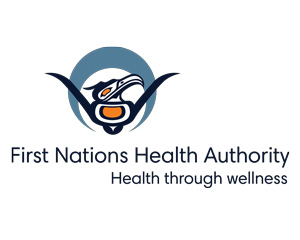The Truth and Reconciliation Commission's 21st Call to Action is for sustainable funding for existing and new Indigenous healing centres. This call is to address the need for mental health and wellness supports for First Nations that focuses on healing and wholistic wellness.
Marina White, Health Director with the Snuneymuxw First Nation, Hilda Green, Manager of Healing Modalities at the First Nations Health Authority (FNHA), and Sharon Thira, Executive Director of Education and Engagement at British Columbia's (BC) Office of the Human Rights Commissioner, presented on this topic in a breakout room during the First Nations Health and Wellness Summit.
Hilda spoke about the FNHA's vision for healing centres – a provincial network to complement what is already available, to support healing from trauma, and most importantly, led and driven by the community itself.
The FNHA is planning to establish five initial healing centres and depending on funding, envisions up to 25 healing centres across the province. Hilda said two sites have already been selected, one in the Interior region and the other on Vancouver Island. Other regions are at varying stages of planning and pre-planning.
While each presenter spoke about different aspects of healing centres, there were several threads that linked each presentation.
One of the most important issues that came up, especially in smaller communities, is safety and confidentiality. Many of the traumas people are living with are intergenerational and involve people in a close-knit community. While some will want to go to a healing centre in their own community, Hilda said some will not want to because of privacy concerns and that the first step is to heal the individual, then work to heal the community.
“There are people who want services within the community but just as many don't and safety is the key when doing trauma work," said Hilda. “Safety is the key point and you can't move forward without safety."
Every community's needs are different and what resources healing centres offer must be based on those needs and the capacity of the community to sustain them. The methods should also be based on that assessment, but a mixed approach using traditional teachings grounded in land based healing, along with Western modalities can offer a flexible approach.
“Healing centres are not treatment centres," said Marina. “Programs should be built on a model led in chunks by experts that include practices specific to the trauma and the regions. This gives back a sense of control that communities once had but was taken away by residential schools."
Ultimately, the goal is to end the cycle of trauma. To do so in a wholistic way, a safe space needs to be created within the community, and this requires the inclusive work of Elders, community leaders, and frontline workers with specific skills to deal with the trauma facing the community.
The First Nations Health & Wellness Summit was a three-day event from April 4-6 to share knowledge and wisdom on community driven practices for wholistic wellness.

